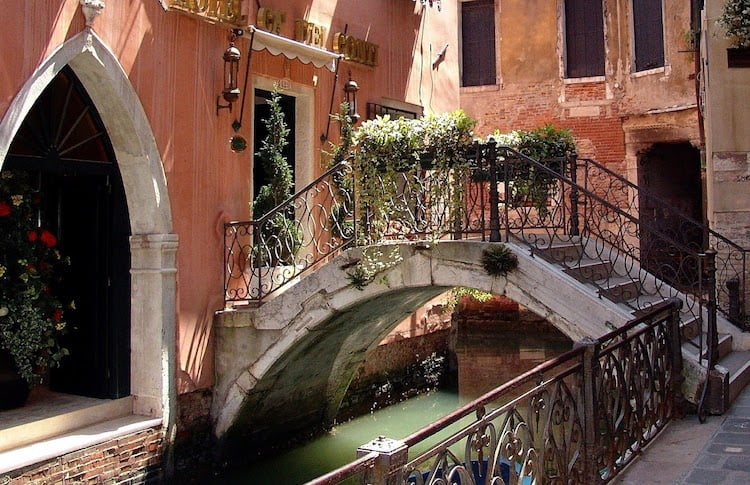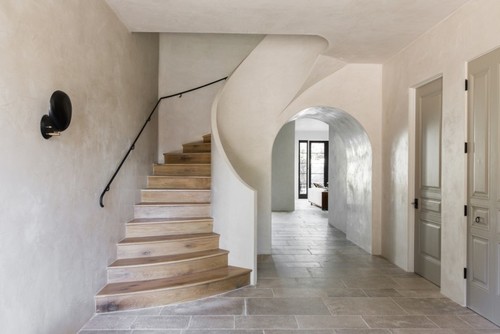What is Venetian Plaster?
Put simply the origins of Venetian Plaster lie in the ancient technique of polished plastering from this historic region. The plaster is made from a slaked lime base with added pigment to create rich colour. Venetian plaster can contain up to 40% marble dust giving it a high level of sheen.
Layers of this fine smooth plaster are applied over each other to create an illusion of texture and depth. Read on to discover more about the origins of Venetian plaster. Find out how to use it and see some beautiful examples of it’s use in interior design.The art of using Venetian Plaster as a decorative finish is an involved process, which takes time, an eye for detail and precise ratios of materials.
Each layer is trowelled on over the last using various methods. It is then left to dry. This process happens in repeat up to seven times before the finish is complete.
Burnishing the top layer with a trowel imparts the reflective opalescent sheen that makes this surface design so desirable and sought-after. Then finally a layer of Beeswax, a traditional final treatment of Venetian plaster. It is used as the final layer, spread on thinly and then polished to develop a lovely sheen. This also acts as protection for the plaster.
The history of Venetian Plaster
The origins of Venetian Plaster trace right back as far as the 1st century AD, to Mesopotamia. In fact, Limestone, which is the base for lime mortars, lime putty and lime paint, is as old as the earth itself. It originates in sea beds from many compressed layers of crushed shell which takes thousands, if not millions, of years to form.
Venetian Plaster became popular in the Roman Empire as a way to imitate natural stone surfaces inside palazzos, villas and cathedrals. Artisans would blend lime plaster with marble dust and pigments to create the compound plaster and then trowel onto walls or ceilings in multiple thin layers with short, overlapping strokes.
This technique of interior and exterior home decoration was rediscovered during the Italian Renaissance. Artists and architects embraced it as an old, new technique and it became a highly desired wall plastering finish.
In fact, many of the great artworks of that time such as Michelangelo’s Sistine Chapel use a similar method. We call this method Fresco. It is a technique of mural painting onto freshly laid, wet, lime plaster.
During this time, in the 15th century, a new finish a new decorative polished plaster appears. It resembles marble but is much lighter in colour. This is called Marmorino.
Marmorino use throughout Venice is primarily on the surface of buildings. This is because it was necessary to keep them as light and water-tight as possible.
The 16th century sees a revival in the technique by renaissance architect Palladio. Held in high regard as one of the most influential builders of the Venetian republic, Palladio used Marmorino in the entire Veneto region of Italy.
Venetian plaster in modern interiors
In the mid 1900’s, Carlo Scarpa, an Italian architect, began using glues and resins to achieve the same effect. In doing so he changed the process taking it from seven layers to three.
Both old and new versions can achieve outstanding decorative effects. Whilst the modern version has a nod to the origins of venetian plaster, no doubt bringing it back into popular interior design, many of these newer acrylic lookalikes do not have the characteristics or benefits of authentic lime plaster.
Since then designer Leigh Herzig, used this polished plaster method to design an entire LA home inside and out. The result is a beautiful mix of rich opalescence and earthy texture.
Authentic venetian Plaster with a limestone base is one of the most natural green substances you can use in your home. It’s also one of the most enduring and works really well in areas of dampness. It is non toxic and low in VOCs. It is breathable because it allows moisture to escape through porous surface, thereby making it resistant to mould and mildew.
This makes the use of polished plaster ideal for bathrooms, kitchens, and splashbacks, as well as interior and exterior walls.
Whether you want an old world, rustic look throughout your home. Or perhaps to enhance the look of a contemporary project, there’s a whole range of bespoke finishes to consider.
Contact us today to discuss your requirements and find out more about using polished plasters in your interior design project.



Recent Comments